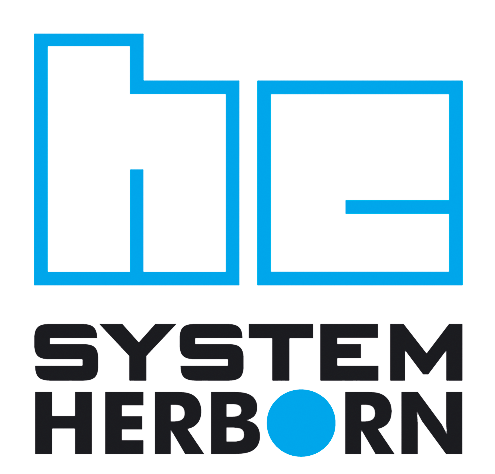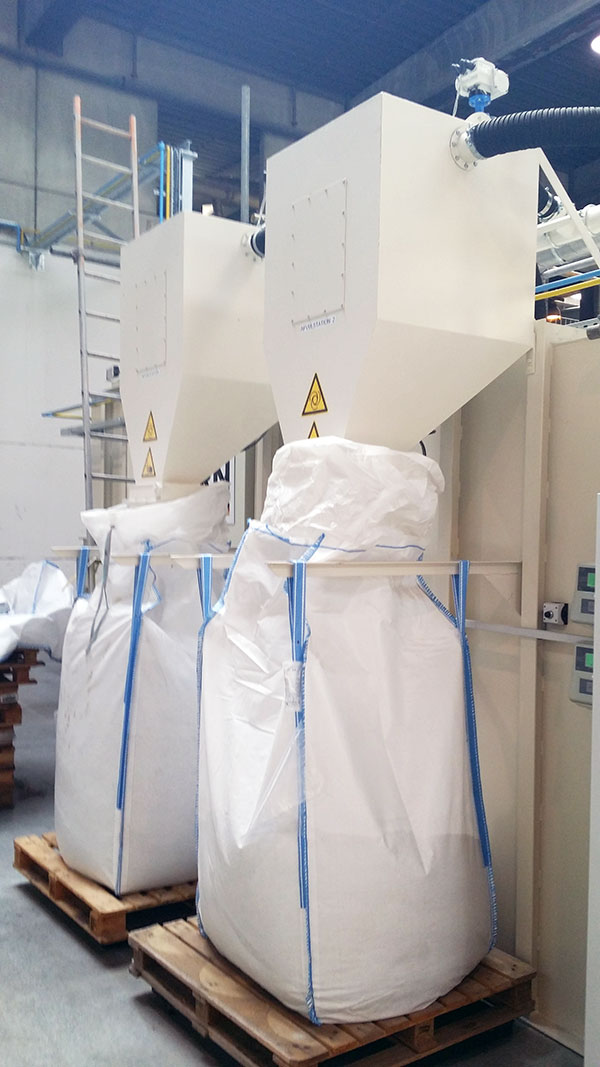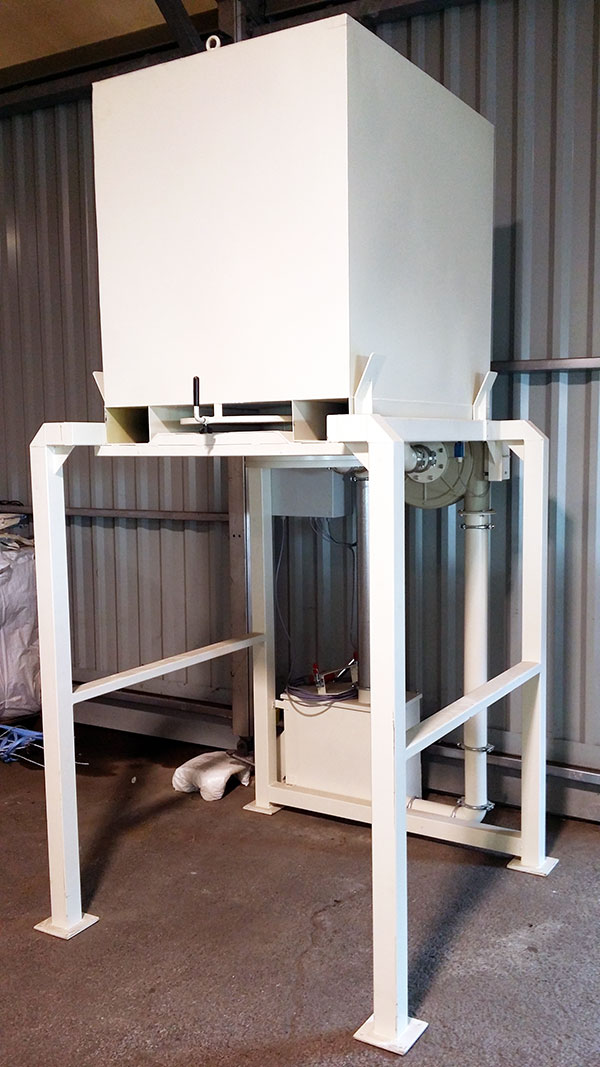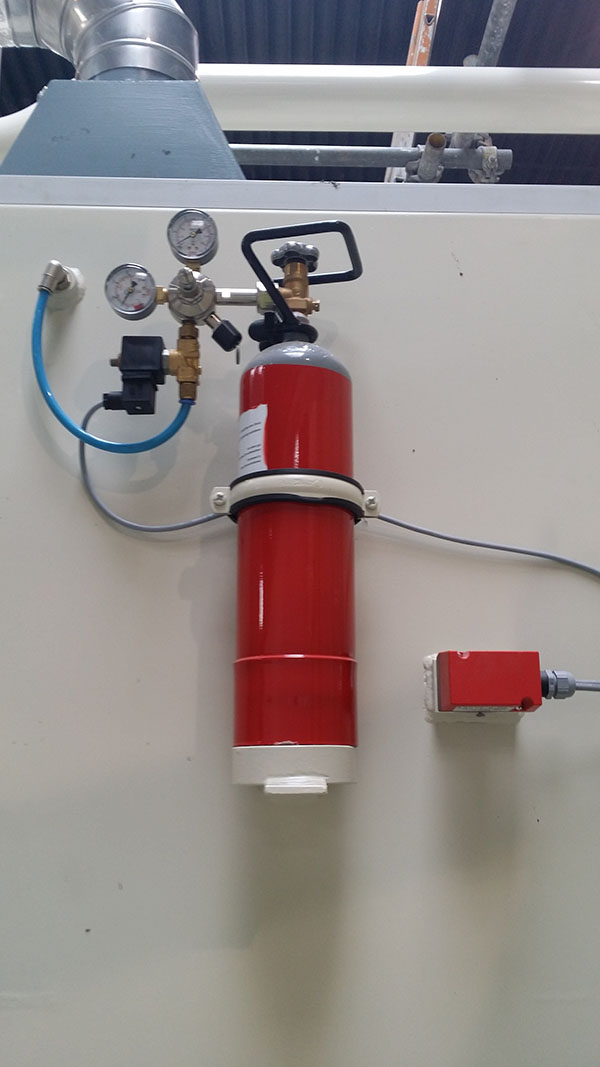Options and Technical Features:
Pallet/box turning/unloading system for TFL lamps
The pallets or the boxes are put into the automatic turning and unloading system of the feeding system. The pallets and boxes are turned and emptied onto the feeding band of the recycling unit. The feeding of the system is covered by a special housing and the enclosed sucking system makes sure that the emissions on the workplace are sucked into the system. No preselection of the lamps to length and diameter.
Feeding system for CFL lamps.
The lamps are feed by the conveyor belt into the centrifuge-sieve crusher for CFL lamps.
Thermal processing CFL lamps
The additional thermal processing station (container) of the CFL plastic parts and metal parts guarantees a reduction of contamination at these parts.
Crusher-installation
The lamps were crushed under under-pressure and the end-caps were separated from the glass parts. The crusher-installation for the glass-tubes consists of a main-crusher and a second crusher.
Glass-separators
The material-stream promoted through under pressure into a separator is cleaned of carried along dust-particles once again. A security-step possibly still severs carried along metal-components in the glass-cycle and supplies these metal-cycle.
End cap-cleaning
The end caps are supplied into an end cap cleaning system. The rest-materials attaching the caps are removed largely mechanically in this system. The cap-outbreak (broken glass) is secreted over a filter-system.
Thermal processing of the cap-outbreak
After the end cap cleaning the separated cap outbreak can be additionally processed by a heating screw and is channeled out.
Filterunit (Sinter plate filter) for fluorescent powder
The filters (built-in) are specifically tailor-made sinter plate filters with self cleaning function controlled over a program and with a long lifetime (Maintenance free).
Thermal treatment (Special furnace with gas burner) incl. industrial gas burner and gas installation
The sorted material-streams (glass/metal) are separately fed to the inbuilt gas fired furnace. The glass is indirectly heated in special chambers which are separated from the gas fired furnace chamber to approximately 500°C. The end-caps are channeled by a screw through the furnace (the screw is separated from the gas fired furnace chamber too) and are heated to approximately 200°C. For both material-streams a heating cycle is predetermined and continuously. From there the material is transported by a conveyor screw into the glass container and into the end-cap container for the further heating procedure. All emissions from this treatment are sucked through powder filter into the activated carbon filter.
Container for glass (TFL) and Container for metal-caps (TFL) with integrated thermal treatment and electric heating device.
Here the glass and the metal caps undergoes a subsequent time controlled heating treatment to minimize the residual mercury contamination.
Active carbon filters
The active carbon filter has capacity of approximately 1 to of special impregnated filter carbon. Reduced current-speed of the process air secures an optimal bond of the mercury.
Cooling-systems for process air
Before admission of the warmed up process air into the active carbon filter, the air is cooled down by a cooling-system. An optimal bond of the mercury to the active carbon is reached by this temperature.
Outlet-air safety filter for toxic powder
Before admission of the process air into the active carbon filter, a Goretex-filter is connected in series to clean around the exhaust air-stream of measurable dust-particles.
Material-sorting takes place on basis of:
- Magnetically separation by magnetic separation cylinder (NdFeB)
- Pneumatically separation
- Mechanically separation
Automatic self-unloading device of glass
The glass removal is carried out during the processing. So a continuous drainage is possible without great losses of time. The internal self-unloading system is part of the integrated suction system of the unit. The unloading was processed under under-pressure and all dust is separate and transport over the dust-filter system. The result is an automatic and dust free unloading of the glass.
Weighing unit for glass (big-bag)
The glass is conveyed to a filling station, where two big bags are available for the glass filling. Both big bags are weighed with a pallet weighting system and after the first big-bag is filled up to a predetermined weight the drainage is automatically switched to the second big bag.
Automatic self unloading device of end-caps
The caps are removed at the bottom of the storage tank with a screw conveyor and fed into a big bag. The result is an automatic and dust free unloading of the caps.
Housing
The feeding-area of the system (feeding conveyor) of the lamps is equipped with a housing that is sucked permanently. All emissions from the workplace and the feeding area are sucked into the unit and through the inbuilt powder filter into the activated carbon filter.
We will be pleased to help you enhance your "system herborn" recycling plant with any number of additional customized features.
The requests we get from our customers include automatic weighing and filling of secondary raw materials, specialized treatment systems for extra waste, noise barriers, an automatic cleanout system for lamp containers, screening units for sorting the dust, monitoring of emissions. Whatever your request, it will be a pleasure to fulfil it.









